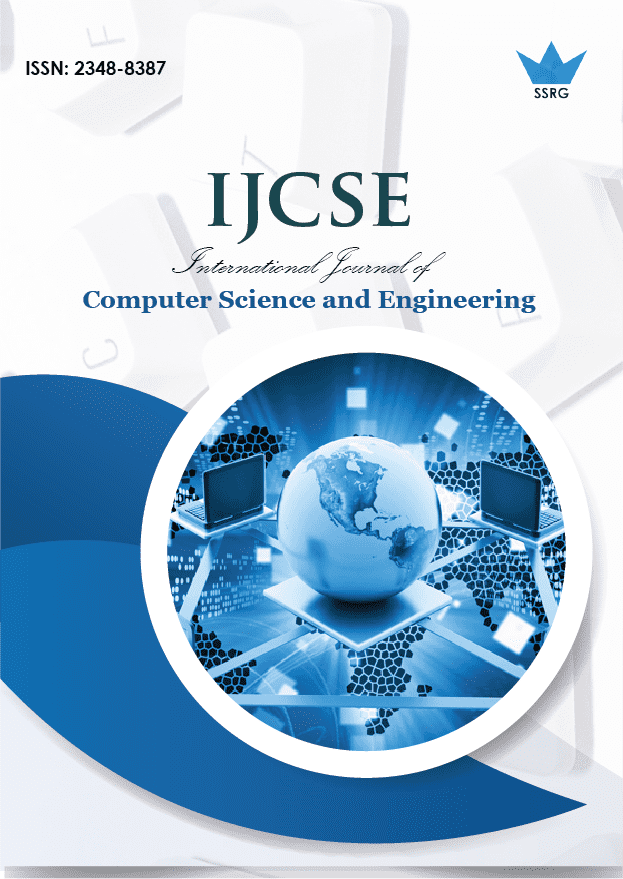IoT Based Smart Traffic Light Control System

| International Journal of Computer Science and Engineering |
| © 2025 by SSRG - IJCSE Journal |
| Volume 12 Issue 5 |
| Year of Publication : 2025 |
| Authors : Ameen Ahmed Khan, Mohammed Fardeen, Sharmasth Vali, Anandaraj S P |
How to Cite?
Ameen Ahmed Khan, Mohammed Fardeen, Sharmasth Vali, Anandaraj S P, "IoT Based Smart Traffic Light Control System," SSRG International Journal of Computer Science and Engineering , vol. 12, no. 5, pp. 35-41, 2025. Crossref, https://doi.org/10.14445/23488387/IJCSE-V12I5P105
Abstract:
This paper presents the design, implementation, and performance analysis of an IoT-based innovative traffic light control system deployed in Tumakuru Smart City, India. The system utilizes real-time congestion data to dynamically adjust signal timings, addressing the limitations of traditional fixed-time traffic management systems. We describe the system architecture incorporating infrared sensors, communication gateways, and an adaptive control algorithm implemented during an eight-week pilot deployment. Performance evaluation demonstrates significant improvements in traffic management efficiency, including a 22.8% reduction in average waiting time, a 28.6% decrease in maximum queue length, and an 18.9% increase in intersection throughput during peak hours. We discuss implementation challenges in the Indian urban context and recommend scaling such systems in emerging smart cities. This work contributes to the growing knowledge of practical, innovative city implementations in developing regions and demonstrates that meaningful urban mobility improvements can be achieved through targeted technological interventions, even with limited resources and compressed timeframes.
Keywords:
Adaptive Signal Control, IoT, Smart Cities, Smart Traffic Management, Urban Mobility.
References:
[1] Md. Mokhlesur Rahman et al., “Traffic Congestion and Its Urban Scale Factors: Empirical Evidence from American Urban Areas,” International Journal of Sustainable Transportation, vol. 16, no. 5, pp. 406-421, 2022.
[CrossRef] [Google Scholar] [Publisher Link]
[2] Bin Ren, Haocheng Luo, and Chunhong He, “A Review of Urban Real-time Traffic Signal Control,” Advances in Engineering Technology Research, vol. 6, no. 1, 2023.
[CrossRef] [Google Scholar] [Publisher Link]
[3] Ala Al-Fuqaha et al., “Internet of Things: A Survey on Enabling Technologies, Protocols, and Applications,” IEEE Communications Surveys & Tutorials, vol. 17, no. 4, pp. 2347-2376, 2015.
[CrossRef] [Google Scholar] [Publisher Link]
[4] M. Batty et al., “Smart Cities of the Future,” The European Physical Journal Special Topics, vol. 214, pp. 481–518, 2012.
[CrossRef] [Google Scholar] [Publisher Link]
[5] Hua Wei et al., “IntelliLight: A Reinforcement Learning Approach for Intelligent Traffic Light Control,” Proceedings of the 24th ACM SIGKDD International Conference on Knowledge Discovery & Data Mining, pp. 2496–2505, 2018.
[CrossRef] [Google Scholar] [Publisher Link]
[6] Wei Miao, Long Li, and Zhiwen Wang “A Survey on Deep Reinforcement Learning for Traffic Signal Control,” 2021 33rd Chinese Control and Decision Conference (CCDC), Kunming, China, pp. 1092-1097, 2021.
[CrossRef] [Google Scholar] [Publisher Link]
[7] Andrea Zanella et al., “Internet of Things for Smart Cities,” IEEE Internet of Things Journal, vol. 1, no. 1, pp. 22–32, 2014.
[CrossRef] [Google Scholar] [Publisher Link]
[8] M. Chiang, and T. Zhang, “Fog and IoT: An Overview of Research Opportunities,” IEEE Internet of Things Journal, vol. 3, no. 6, pp. 854-864, 2016.
[CrossRef] [Google Scholar] [Publisher Link]
[9] Ammar Gharaibeh et al., “Smart Cities: A Survey on Data Management, Security, and Enabling Technologies,” IEEE Communications Surveys & Tutorials, vol. 19, no. 4, pp. 2456–2501, 2017.
[CrossRef] [Google Scholar] [Publisher Link]
[10] Chunsheng Liu et al., “Machine Vision Based Traffic Sign Detection Methods: Review, Analyses and Perspectives,” IEEE Access, vol. 7, pp.86578-86596, 2019.
[CrossRef] [Google Scholar] [Publisher Link]
[11] H. Hartenstein, and L.P. Laberteaux, “A Tutorial Survey on Vehicular Ad hoc Networks,” IEEE Communications Magazine, vol. 46, no. 6, pp. 164–171, 2008.
[CrossRef] [Google Scholar] [Publisher Link]
[12] Zhi Zhou et al., “Edge Intelligence: Paving the Last Mile of Artificial Intelligence with Edge Computing,” Proceedings of the IEEE, vol. 107, no. 8, pp. 1738–1762, 2019.
[CrossRef] [Google Scholar] [Publisher Link]
[13] Tania Banerjee et al., “A Multi-sensor System for Traffic Analysis at Smart Intersections,” 2019 Twelfth International Conference on Contemporary Computing, 2019.
[CrossRef] [Google Scholar] [Publisher Link]
[14] Taewoo Nam, and Theresa A. Pardo, “Conceptualizing Smart City with Dimensions of Technology, People, and Institutions,” Proceedings of the 12th Annual International Digital Government Research Conference: Digital Government Innovation in Challenging Times, pp. 282–291, 2011.
[CrossRef] [Google Scholar] [Publisher Link]
[15] Hafedh Chourabi et al., “Understanding Smart Cities: An Integrative Framework,” 2012 45th Hawaii International Conference on System Sciences, 2012.
[CrossRef] [Google Scholar] [Publisher Link]
[16] Renato William R. de Souza et al., “Deploying Wireless Sensor Networks–based Smart Grid for Smart Meters Monitoring and Control,” The International Journal of Communication Systems vol. 38, no. 10, 2018.
[CrossRef] [Google Scholar] [Publisher Link]
[17] Hua Wei et al., “A Survey on Traffic Signal Control Methods,” arXiv Preprint, 2019.
[CrossRef] [Google Scholar] [Publisher Link]

 10.14445/23488387/IJCSE-V12I5P105
10.14445/23488387/IJCSE-V12I5P105